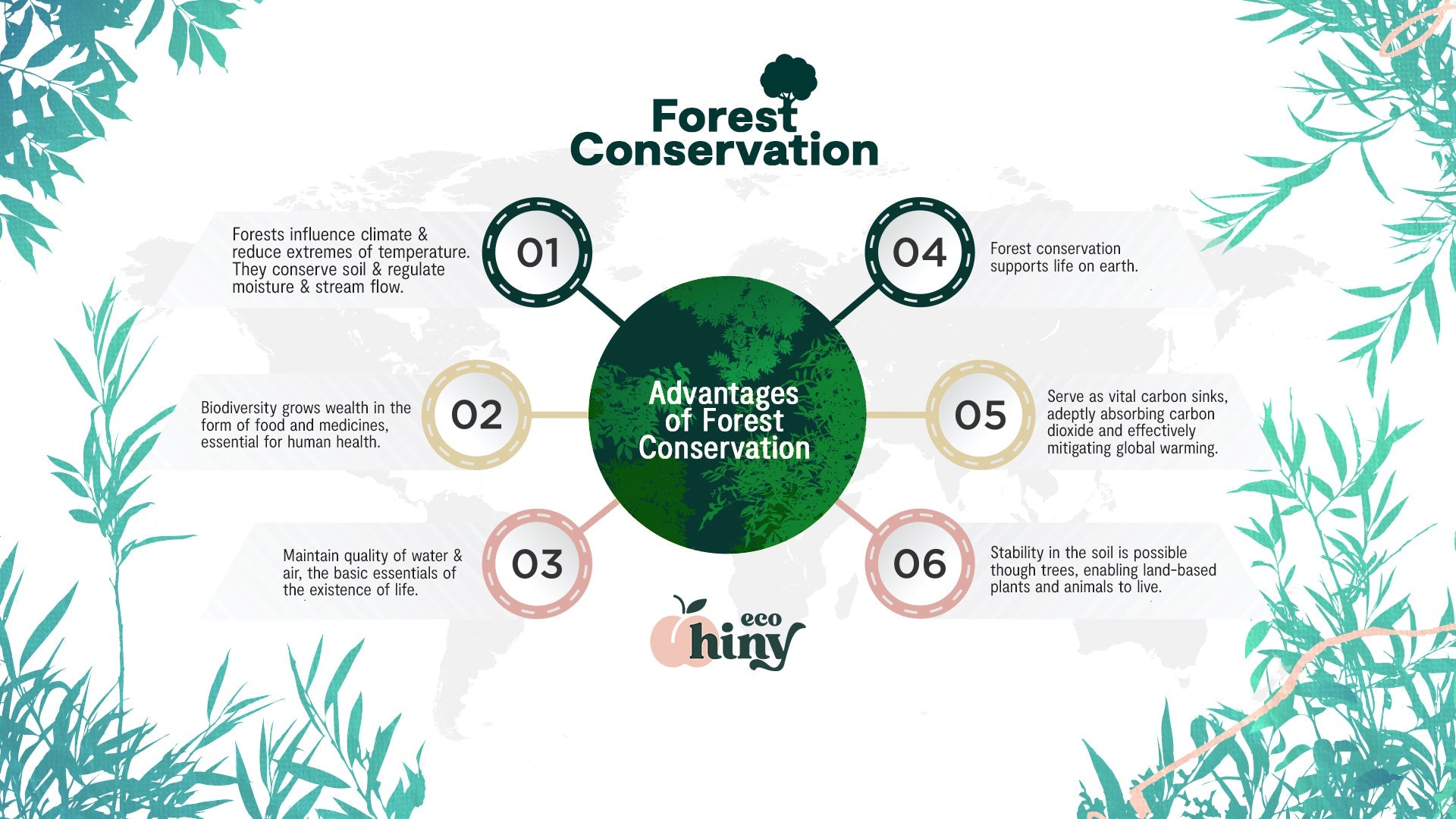Forest Conservation:
The vital role forests play on our planet
Forest conservation means preserving and maintaining forests for the present and future generations. It involves protecting forest resources from overuse, destruction, and degradation.
By carefully managing forests, we can ensure that they continue to provide vital ecosystem services critical to our planet's health.
Unfortunately, we're losing these precious lands at an alarming rate. Expanding agriculture, urban sprawl, and logging for wood and paper are contributing to deforestation at alarming rates.
It's estimated that our planet loses 18.7 million acres of forested land each year. The environmental toll of deforestation could lead to catastrophic results should we continue at this current rate.
Why? Because we need forests.
Sustaining our world's forests is necessary for maintaining biodiversity, stabilizing our climate, and protecting human life. At ecoHiny, we don't think there are more important priorities than that!
We want to help spread the word about the importance of protecting our forests by sharing all the important roles they play on our planet.
Types of Forests that Need Our Protection
When it comes to forests, they're all important, but it should be noted that they're not all the same. There are three main types of forests on the planet, and each has extremely different characteristics.
Rainforest
Rainforests are characterized by high rainfall and are typically found in tropical regions. It's estimated that nearly 50,000 different tree species live in rainforests.
Although they only cover about 6% of the planet, they are home to more than half of the world's plant and animal species!
Temperate
Temperate forests experience moderate climate and precipitation. They're full of deciduous trees, the kind that lose their leaves in the fall, and also contain evergreens that retain their needles year-round.
Typically found between the tropics and polar regions, temperate forests experience four distinct seasons.
Boreal
Boreal, or taiga, are in our northern hemisphere. These regions experience very cold winters and short summers. Coniferous trees dominate their landscape, as well as animals that have adapted to harsh conditions.
Boreal forests actually play the biggest role in the carbon cycle, storing more carbon per unit than any other forests.
One characteristic they all have in common is their ability to provide life-sustaining benefits to all living things. Let's look at exactly how they contribute to viable life on Earth.
A Tree's Biggest Job: Influencing Climate Through the Carbon Cycle
Trees play a crucial role in the carbon cycle as they absorb carbon dioxide from the atmosphere during photosynthesis. This process involves the conversion of carbon dioxide into compounds such as sugars that feed and energize the tree.
This means that trees help to regulate the amount of carbon dioxide in the atmosphere. The more we have, the more carbon is sequestered instead of released into the atmosphere as a harmful greenhouse gas.
When deforestation occurs, the carbon stored in trees is released back into the atmosphere, contributing to an increase in greenhouse gases.
Greenhouse gases trap heat in the Earth's atmosphere and contribute to the warming of the planet.
While preserving our forests is one of the key weapons in battling the climate crisis, trees also perform many other important and incredible functions on our planet.
Conserve and Enrich Soil
Trees and other vegetation found in forests help to hold soil in place. Roots, branches, and tree leaves slow water before it reaches the forest floor. This barrier is especially important during downpours or intense rainy seasons.
Fallen leaves and other organic matter in forests help to nourish the soil, which makes it fertile and nutrient-dense.
Promote Biodiversity
Biodiversity refers to the variety of living organisms present in a particular ecosystem, and it's critical for the health of our planet.
Countless species of plants and animals make their homes in our woodland areas. It is estimated that more than 80% of all plants, animals, and insects that live on land make their home in forests.
Biodiversity means ecosystem stability, food security, availability of medicines derived from plants and animals, and the economic benefits of tourism and responsible agriculture.
Water and Air Quality
Forests naturally filter water, and they provide drinking water for 150 million people in the U.S. alone.
As rainwater flows through forest soil, tree roots trap sediment and keep it from reaching streams. Filtration of the water continues as it flows, absorbing nutrients, such as phosphorus and nitrogen, that would end up polluting waterways.
Trees also intake gaseous molecules from the air that contain pollutants. Tree canopies also affect temperature, which can lower concentrations of pollution.
Trees Need Us Now
Responsible management, protection, and preservation of environmental and natural resources are critical for enjoying a sustainable society and combating climate change; our forests are at the top of these resources that need preserving!
Forest ecosystems provide a wealth of benefits that can't be replaced, so we must support efforts to mitigate forest loss and be cognizant of how our consumption can lead to deforestation.
Take the Toll Off the Trees
Remember, at ecoHiny, we offer a way to reduce your household impact on deforestation significantly. The toilet paper industry is responsible for an alarming share of the degradation of our world's forests, but it's easy to stop contributing to that.
We believe that all toilet paper can and should be tree-free, so we give you that option.
Join us in conserving our forests so we can combat climate change and enjoy the benefits of trees now and for generations to come.







